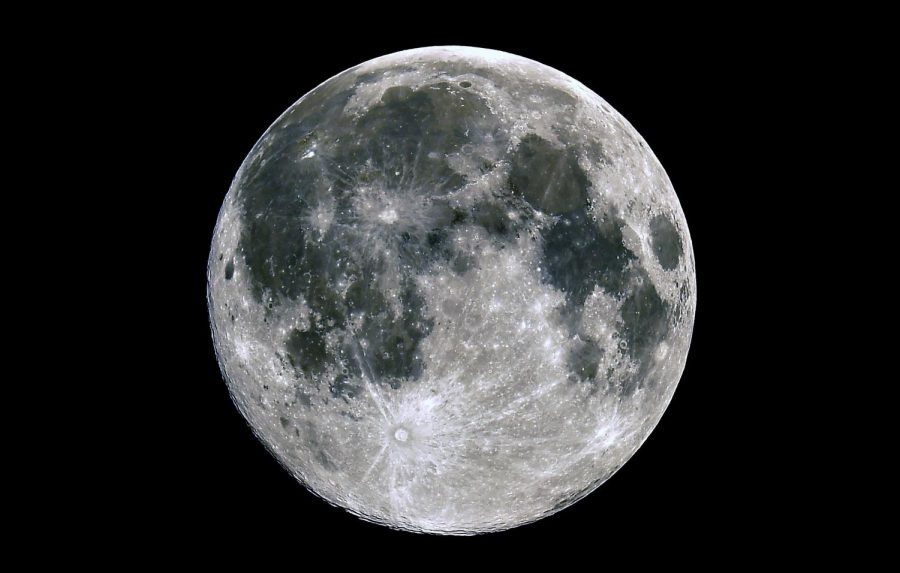Pink moon
It’s April 26th, 2021 and a child looks up at the sky. This child notices that the moon doesn’t look anything like it normally does. The moon is brighter and larger; it is the first of two super moons to happen in 2021. Contradicting its name, the pink moon isn’t actually going to be pink. It will take a golden hue in appearance and can appear about 30% brighter than an average moon. It will be considered a supermoon due to its location in the sky when it is in it’s full moon phase. While the moon is full this month, it will reach perigee. Perigee is the point when the moon is closest to Earth in its orbit. With the full moon and perigee occurring at the same time, the moon will get the title “supermoon”. This is a great opportunity for students or people interested in astronomy to get a first hand look at some of the interesting events to occur this lunar year. “I plan on looking at the pink moon that is going to happen this April.” said Ava Tomky (10). The supermoon this month will not be the only one to occur this year. A second supermoon in May named the super flower moon will also occur. Often these moons are named after when they occur and not what they look like. The pink moon is named after the flower of the ground phlox. This flower blooms a bright pink color and is common in northern America. Though commonly known as the pink moon, it has many other names that are used when referring to it. It has been called the Sprouting Grass Moon, the Egg Moon and the Fish Moon in the past. The moon will appear after sunset to become the brightest at about 10pm central time. If unable to watch this supermoon, watch the next in May. Oftentimes space events take place during the middle of the night, so these moons are an educational opportunity to view space without missing out on too much sleep! “I’ve watched multiple space events and I try to keep up with things that are going on in the sky,” continued Tomky.
April 19, 2021
It’s April 26th, 2021 and a child looks up at the sky. This child notices that the moon doesn’t look anything like it normally does. The moon is brighter and larger; it is the first of two super moons to happen in 2021. Contradicting its name, the pink moon isn’t actually going to be pink. It will take a golden hue in appearance and can appear about 30% brighter than an average moon. It will be considered a supermoon due to its location in the sky when it is in it’s full moon phase. While the moon is full this month, it will reach perigee. Perigee is the point when the moon is closest to Earth in its orbit. With the full moon and perigee occurring at the same time, the moon will get the title “supermoon”. This is a great opportunity for students or people interested in astronomy to get a first hand look at some of the interesting events to occur this lunar year.
“I plan on looking at the pink moon that is going to happen this April.” said Ava Tomky (10).
The supermoon this month will not be the only one to occur this year. A second supermoon in May named the super flower moon will also occur. Often these moons are named after when they occur and not what they look like. The pink moon is named after the flower of the ground phlox. This flower blooms a bright pink color and is common in northern America. Though commonly known as the pink moon, it has many other names that are used when referring to it. It has been called the Sprouting Grass Moon, the Egg Moon and the Fish Moon in the past. The moon will appear after sunset to become the brightest at about 10pm central time. If unable to watch this supermoon, watch the next in May. Oftentimes space events take place during the middle of the night, so these moons are an educational opportunity to view space without missing out on too much sleep!
“I’ve watched multiple space events and I try to keep up with things that are going on in the sky,” continued Tomky.
















